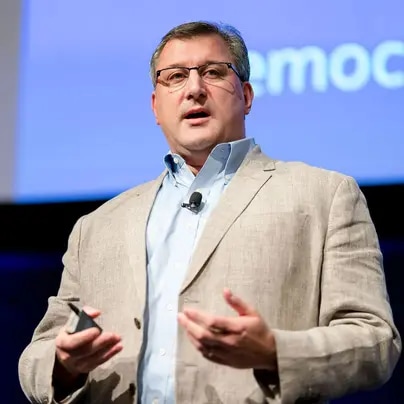Fly my network to the Moon

Nokia will be celebrating the new decade with quite a singular accomplishment: the first extraterrestrial cellular network. NASA has selected Nokia as a partner to advance “Tipping Point” technologies as part of a government-industry partnership to provide critical technologies needed for future lunar missions. Nokia’s contribution is centered on communications and networking technologies, and to that end, Nokia Bell Labs’ pioneering innovations will be used to build and deploy an LTE/4G network to the lunar surface in collaboration with our partners at Intuitive Machines.
Like shelter, food and life support, communications will be a crucial component of any future lunar (or Mars) mission. Not only will astronauts need to communicate with one another and mission control, they will also need mobile voice and data capabilities for a number of applications: high-definition video streaming, remote monitoring of sensors and instruments, exchange of telemetry and biometric data and critical command and control functions such as the remote control of lunar rovers. All these applications require advanced communication capabilities. Our vision is to bring to space the state-of-the-art technologies we have developed for terrestrial service-provider and enterprise networks.

An artist’s rendering of a lunar rover communicating with a landing module using Nokia Bell Lab’s LTE/4G self-configuring cellular network. Image courtesy of Nokia Bell Labs and Intuitive Machines.
The first un-crewed mission, planned for 2024, will validate our technology and some of these use cases by integrating and deploying a standalone LTE/4G solution on an Intuitive Machines Nova-C lander. This first mission will confirm the readiness of cellular technologies as the communication standard for space missions in the future and pave the way towards a sustainable human presence on the Moon by the end of the decade.
The reaches of space are hardly foreign to us. In 1962, Bell Labs and NASA launched into orbit Telstar 1, the first communications satellite capable of relaying TV signals between Europe and North America. In 1964, Bell Labs researchers – and future Nobel laureates – Arno Penzias and Bob Wilson discovered the cosmic microwave background radiation left over from the Big Bang, confirming the now predominant theory on the origins of the universe. We’ve always had an intense scientific curiosity that has led to some of the greatest innovations and discoveries known to humankind.
But curiosity alone isn’t what drives it. All of Nokia Bell Labs’ innovations were achieved with the aim of advancing humanity through practical technology solutions. The invention of the transistor resulted directly from Bell Labs’ search for a replacement to the vacuum tube in telecom switches. Even our role in the Big Bang was the byproduct of an applied science project. Penzias and Wilson were searching for a more efficient means of satellite communications when they discovered the cosmic background radiation for which they are now famous. So yes, we are excited to be partnering with NASA in one of the greatest scientific endeavors of the decade. In the process, we are advancing the technology we use right here on Earth by enhancing the capabilities of the networking solutions that are used by the billions of subscribers served by Nokia’s many communication service-provider and enterprise customers.
For this mission, we have developed an ultra-compact, low-power, end-to-end networking solution. While this is a unique, purpose-built solution, we are leveraging the same LTE base-station and evolved-packet-core unit Nokia has deployed around the world in small-cell networks. The radio and modems that will be installed in lunar rovers are based on the same user-equipment designs found in today’s 4G phones and devices. We have of course optimized and hardened these technologies to meet the strict payload requirements of spaceflight, to withstand the vibrational impact of a rocket launch and lunar landing, and to operate under the extremely harsh environmental conditions on the Moon’s surface (such as temperature, vacuum and radiation).
This is commercial-off-the-shelf technology, but every aspect of it – power, weight, size, operational efficiency and reliability – has been carefully modified for this undertaking. In essence, we have created a network for the most extreme environment imaginable. And if we can achieve that feat, just imagine what we can do with Earth-bound networks. By building a communications network for the Moon, we are building better networks for our customers on Earth.
This mission is not a small endeavor, and to quote President John F Kennedy: “We choose to go to the Moon in this decade and do the other things, not because they are easy, but because they are hard.” Solving the hardest communication challenges and developing groundbreaking technologies is in the DNA of Nokia Bell Labs. With this mission, we are pushing ourselves and our innovations to new heights.
Humankind’s fascination with space exploration is intensifying. We are sending more humans and more machines into space, not only to explore and study, but also to pursue new business ventures and even to experience the cosmos as tourists. Wherever those humans and machines go, they will need communications, and Nokia is prepared to make that journey with them.
Related article:
